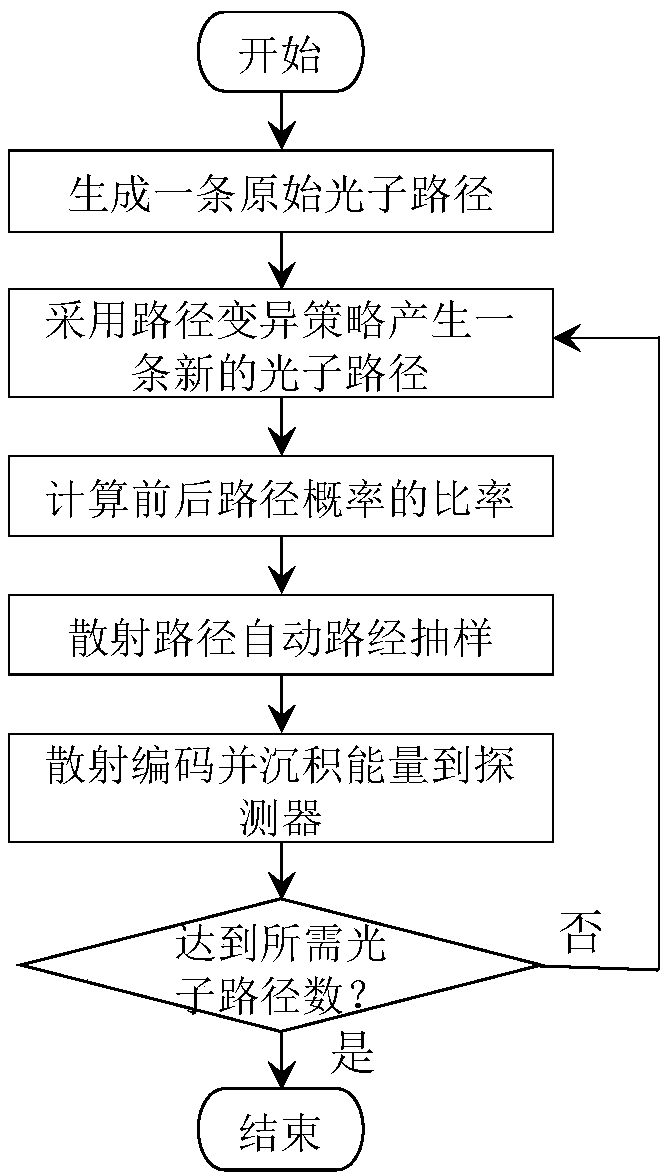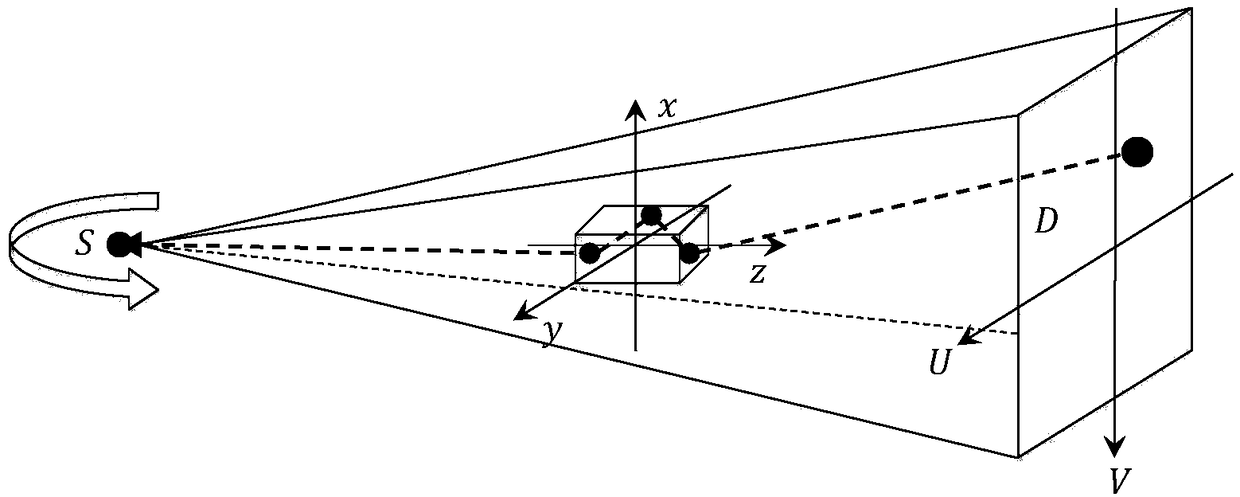Task-driven Monte Carlo scattered photon simulation method
A task-driven, simulation-based technology, applied in radiological diagnostic instruments, 2D image generation, image data processing, etc., can solve problems such as poor result change and difficulty in importance distribution, and achieve the effect of improving simulation efficiency
- Summary
- Abstract
- Description
- Claims
- Application Information
AI Technical Summary
Problems solved by technology
Method used
Image
Examples
Embodiment 1
[0066] Such as Figure 1-5 As shown, a task-driven Monte Carlo scattering photon simulation method, the specific steps are as follows:
[0067] Step 1: Preset and initialize photon scattering parameters to generate an original photon path.
[0068] Among them, the parameters of photon scattering include photon scattering energy, type, order, path probability and number of photon paths, and the total probability of photon scattering path is the product of each fragment probability in all fragments.
[0069] The second step: use the uniform sampling algorithm and the random walk sampling algorithm to sample the positions of the scattering points to generate a simulated photon path.
[0070] In the second step, according to the different positions of the scattering points, the corresponding sampling algorithm is selected for random sampling operation, as follows:
[0071] P1. Determine the position of the scattering point.
[0072] If it is a first-order scatter point, a unifo...
Embodiment 2
[0115] A kind of Monte Carlo scattering photon simulation method based on task-driven, other features are identical with embodiment 1, and difference is: as Image 6 As shown, this embodiment is an actual simulation operation, and the data adopted and acquired below are all obtained from actual operations and are authentic.
[0116] The platform of the simulation operation is the ubuntu-12.04.4 system GPU architecture, the graphics card device is NVIDIAGeForce GTX TITAN Z, the energy of the X-ray source is 60kVp, and the uniform phantom size used is 10×10×2.8cm 3 , the size of the matrix is 250×250×280, the size of the detector is 40cm×30cm, the size of the matrix is 512×384, the distance from the ray source to the rotation center and the distance from the rotation center to the detector are 15.59cm and 49.41cm respectively, the following is Specific simulation steps:
[0117] The first step is to preset and initialize photon scattering energy, type, order, path probabili...
PUM
 Login to View More
Login to View More Abstract
Description
Claims
Application Information
 Login to View More
Login to View More - R&D
- Intellectual Property
- Life Sciences
- Materials
- Tech Scout
- Unparalleled Data Quality
- Higher Quality Content
- 60% Fewer Hallucinations
Browse by: Latest US Patents, China's latest patents, Technical Efficacy Thesaurus, Application Domain, Technology Topic, Popular Technical Reports.
© 2025 PatSnap. All rights reserved.Legal|Privacy policy|Modern Slavery Act Transparency Statement|Sitemap|About US| Contact US: help@patsnap.com



